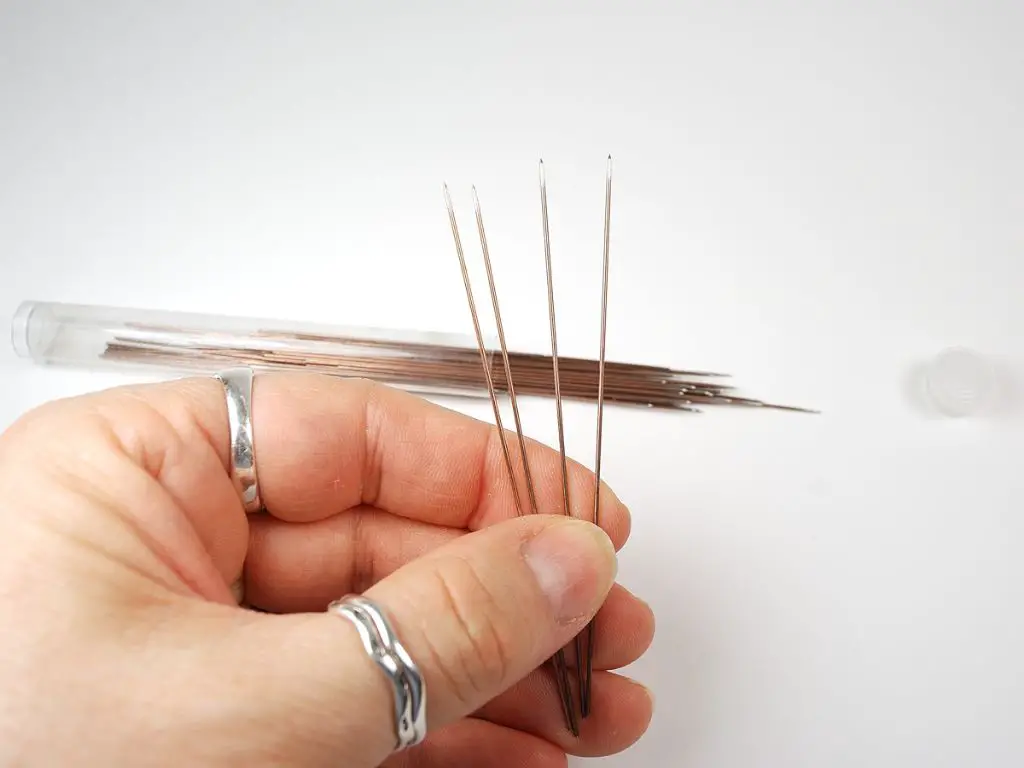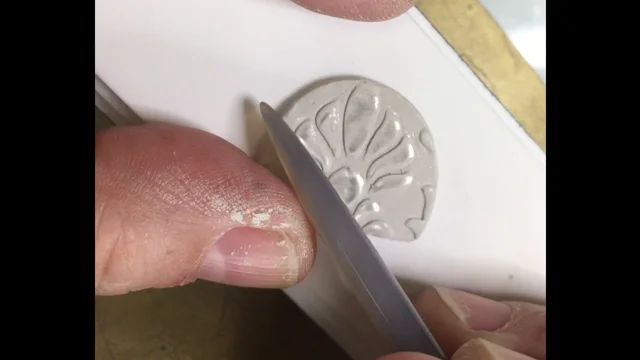Are Clay Beads Good For Bracelets?
Clay beads have been used to make jewelry and adornments for thousands of years across many cultures. They are one of the oldest forms of beads, dating back to prehistoric times. Clay is an accessible and malleable material that can be shaped, decorated, and fired to create beautiful, durable beads for all kinds of jewelry.
Clay beads come in endless shapes, sizes, colors and designs. They can be painted, glazed, etched or left plain. Today, artisans around the world create stunning clay bead jewelry using both traditional and contemporary techniques. From delicate polymer clay beads to earthy porcelain beads, clay is beloved for its versatility.
When strung into necklaces, bracelets or earrings, clay beads add artistry, texture and color. Their earthy, organic nature makes clay beads popular for boho, ethnic and artisan-style jewelry. This article explores the world of clay beads, from their history and production to design ideas and care tips.
Types of Clay Used for Beads
There are a few main types of clay that are commonly used to make beads for jewelry and craft projects:
Polymer Clay
Polymer clay is one of the most popular and versatile clays for making beads. It is a pliable plastic compound that cures when baked at a low temperature, usually around 265°F. Polymer clay can be conditioned and shaped by hand, extruded through a pasta machine, or molded using silicone molds. It comes in a wide array of colors that can be blended and marbled to create unique effects. Polymer clay is durable, lightweight, and takes on a smooth, glass-like finish after baking. Popular brands like Sculpey and Fimo make polymer clay in many skin-safe colors.
Air-Dry Clay
Air-dry clay is a water-based modeling clay that dries and hardens at room temperature. Once shaped, air-dry clay beads simply need to be left out to cure and don’t require any special tools or oven for baking. Air-dry clays like Crayola Model Magic are non-toxic, making them a good choice for children’s crafts. The finished surface can be painted with acrylics or sealed with varnish. Since air-dry clay contains water, the beads may be prone to cracking as they fully cure and dry.
Oven-Bake Clay
Oven-bake clays are modeling compounds similar to polymer clay, except they require higher baking temperatures to cure, usually around 275°F. Sculpey III and Makin’s Clay are examples of popular oven-bake clays. They can be shaped by hand or with acrylic clay tools, allow time for drying, and then baked in a standard kitchen oven to harden the clay. The higher heat helps the clay fully polymerize into a strong, durable material. Oven-bake beads take on a matte, porous look unless glazed.
Benefits of Clay Beads
Clay beads offer many advantages that make them a popular choice for jewelry making. Some of the key benefits of clay beads include:
Inexpensive – Clay is an affordable material, so clay beads tend to cost much less than glass, gemstone, or metal beads (https://www.amazon.co.uk/STARS-GROUP-Clay-Beads-Jewellery/dp/B0CQRZ8QR1). Handmade clay beads are very budget-friendly for hobbyists and small business owners.
Customizable – Clay is highly flexible and can be shaped, etched, painted, and decorated in endless ways. Clay beads allow for immense creativity and customization options compared to factory-made beads.
Variety of colors/textures – Clay comes in countless colors from vibrant brights to earthy neutrals. The texture of clay beads can also vary from smooth to bumpy depending on the clay and finishing techniques. This diversity allows jewelry makers to achieve their desired look.
Lightweight – Fired clay beads are lightweight, making clay an excellent material for large statement beads, long necklaces, and delicate bracelets that are comfortable to wear. The lightweight nature also reduces shipping costs for finished pieces.
Downsides of Clay Beads
While clay beads have many benefits, there are some potential downsides to consider as well. One issue is that clay can be brittle and prone to breaking, especially when fired at higher temperatures. According to the University of Upstart Farmers, clay pebbles used in hydroponics “can crack and crumble easily” (source). This brittleness needs to be accounted for when drilling holes and stringing clay beads.
Another downside is that the porous nature of clay means beads must be properly sealed to prevent staining and absorption of moisture. Polymer clay beads in particular are very porous before baking. Beads must be thoroughly cured and then sealed with a finish like polyurethane or epoxy resin to protect them. Unglazed air dry clay is also prone to absorbing stains. Sealing requires additional time and materials.
In summary, clay beads can be prone to breakage when fired at high temperatures. Their porous structure also requires proper sealing to prevent staining and moisture absorption. Accounting for brittleness and taking the time to seal the beads helps overcome these potential downsides.
Best Practices for Making Clay Beads
When working with polymer clay, following some best practices will help ensure your beads come out smoothly and hold their shape well. Here are some tips for making high-quality clay beads:
Conditioning the clay is an important first step. Knead it thoroughly until it is soft and pliable. This prevents cracking and makes the clay easier to shape. Use a pasta machine or acrylic roller to flatten the clay into sheets for more consistent sizing.1

Having the right tools makes shaping the beads much easier. Clay shapers, cutters, and molds provide uniformity and smooth finishes. Texture mats can add interest too. Cut the conditioned clay into small pieces before shaping.2
Follow the baking instructions carefully, checking the temperature and time needed for the specific clay type. Allow the beads to cool completely before handling. Baking gives the beads their hardness and durability. Under or over-baking can lead to issues.
By starting with quality clay and using proper techniques, you can create beautiful, vibrant clay beads for all kinds of jewelry and craft projects.
Stringing and Finishing Clay Beads
Once your clay beads are baked and cooled, it’s time to string them together to create jewelry or other decorative pieces. When selecting materials for stringing clay beads, it’s best to choose options that will not stretch over time or deteriorate when exposed to moisture.
Nylon beading thread or cord is commonly used for stringing clay beads as it is very durable. You can find nylon thread in different weights to suit your project. Heavier options like 0.5mm work well for necklaces while lighter 0.2-0.3mm threads are good for bracelets or earrings. Nylon has little stretch which helps keep the tension on a strung necklace or bracelet.
Other good stringing options are soft Flex wire which holds its shape well, or stainless steel wire for a more industrial look. Avoid using elastic cord or thread when stringing clay beads as the elastic can lose its stretch over time and cause the strand to fall apart (source: https://www.pinterest.com/pin/frozen-in-2023–987414287032424343/).
Once your clay beads are strung, it’s important to seal the ends so the holes don’t get bigger over time. Clear nail polish works well for sealing clay beads. Apply a thin coat of polish over the openings at each end and let it dry fully. This will help prevent the stringing material from rubbing inside the holes and enlarging them.
An alternative is a liquid clay sealant which can be brushed over the ends of the beads and baked to harden. This creates a more durable seal than nail polish. Be sure to let clay beads cool fully before sealing or stringing to prevent cracking (source: https://s.click.aliexpress.com/deep_link.htm?aff_short_key=UneMJZVf&dl_target_url=https%3A%2F%2Fja.aliexpress.com%2Fitem%2F1005005786362189.html%3F_randl_currency%3DJPY%26_randl_shipto%3DJP%26src%3Dgoogle).
Clay Bead Design Ideas
There are endless ways to get creative with clay bead designs. Some popular design styles for clay beads include:
Geometric
Geometric clay beads feature symmetrical shapes, straight lines, and angular patterns. Some examples are triangles, cubes, hexagons, and pyramids. Geometric beads make a modern, sleek statement in jewelry designs. Simple painted designs on geometric shapes can create an eye-catching effect.
Floral
Flowers are a classic and feminine design for clay beads. Beads can be shaped into flowers like roses, tulips, daisies, and more. Florals look beautiful glazed in spring-like colors. Delicate carved floral patterns are another option for achieving a floral style.
Mosaic
Mosaic clay beads are made by joining small, individually shaped pieces of clay together to form a bead. Varying the color and texture of the clay pieces produces a mosaic appearance. Intricate mosaic designs require patience but deliver striking results.
Carved
Carved clay beads are made by sculpting designs into the surface of the clay. Shapes, symbols, words, and more can be carved using metal clay tools. The carved sections are then filled with colored clay or glaze to create contrast. Carved beads have an artistic, handmade look.
The options are unlimited when making your own clay bead designs. Follow your inspiration and creativity to make unique DIY jewelry.
Care and Maintenance of Clay Beads
Clay beads are fairly durable, but can be prone to chipping or cracking over time, especially if handled roughly. Here are some tips to help your clay bead jewelry last longer:
Avoid Dropping or Banging: Try to avoid knocking your clay beads against hard surfaces, as this can result in chips, cracks, or scratches. Store them carefully when not being worn.
Limit Water Exposure: While polymer clay beads are water-resistant, prolonged exposure to water can start to break them down. Avoid submerging them in water when cleaning. Instead, wipe gently with a damp cloth.
Re-seal When Needed: Over time, the outer coating on polymer clay can start to erode. If beads start looking dull or porous, you can refresh their shine and durability by brushing on a thin layer of liquid polymer clay, then curing again per package instructions.
Check Stringing Material: Make sure cords, wire, or elastic used to string the beads is in good condition. Old or worn stringing material can cause undue stress on the beads.
With proper care and handling, polymer clay beads can last for many years. Take precautions to limit damage and re-seal worn spots, and your handmade clay jewelry will stay beautiful for a long time.
Clay Beads vs. Other Materials
Clay beads have some advantages and disadvantages compared to other common bead materials like glass, wood, gemstones, and acrylic.
Compared to glass beads, clay beads are usually cheaper and easier to make custom designs with. However, glass beads are more durable and have more shine and reflective qualities. Clay beads can be painted and textured in many creative ways that glass cannot (Source).
Wooden beads are also very affordable and artisan-made like clay. But wood is not as versatile for achieving different shapes and textures. Clay can mimic natural materials like wood, stone, and glass but has more malleability (Source).
Natural gemstone beads have a beautiful, earthy look that some clays can imitate. However, genuine stones are much more expensive than polymer clay. Acrylic beads are artificial like clay but don’t allow for custom designs.
So while clay lacks the durability, shine, or natural qualities of glass, wood, or stone, its artisan nature and versatile design options make it stand out as a unique DIY material.
Conclusion
In summary, clay beads have several benefits that make them a great choice for bracelets, including their natural texture, wide variety of colors and finishes, durability, and lightweight feel. However, clay beads do require more care than glass or metal beads, as they can become brittle if allowed to dry out and are prone to chipping if knocked against hard surfaces. With proper stringing and sealing techniques though, clay bead bracelets can have a long useful lifespan. The key is to select high quality polymer or air-dry clay, shape and cure the beads correctly, and apply a protective finish. For crafters willing to take the extra steps, clay beads allow for beautiful one-of-a-kind bracelet designs.

